In a previous article, we saw how Electronics City’s Township Authority (ELCITA) manages to keep its roads free of potholes by ensuring good drainage and prompt filling of potholes. Functioning stormwater drains that prevent waterlogging and seepage into road surfaces were identified as an important factor in ensuring pothole-free roads.
BBMP too has its own set of guidelines on how to ensure effective drainage of rainwater from roads. In reality, however, whether those guidelines are being followed can be a hit or miss across the city. Residents also play their part by encroaching on roads and drains and dumping garbage in drains.
Expert committee on roads and drains
BBMP’s Technical Advisory Committee (TAC) was set up in 2007 to look into road construction projects based on an order from the Karnataka High Court. The TAC constituted an expert committee headed by K N Shivashankara Rao, retired Chief Engineer, PWD, Govt of Karnataka. The Committee was tasked with preparing a set of detailed guidelines for use by the engineers of BBMP in the construction and maintenance of roads.
The comprehensive report prepared by this committee went into detail about how BBMP can ensure roads are maintained properly and do not degenerate into potholes every rainy season. It recognised waterlogging caused by issues with the drainage system as one of the important reasons for bad roads. The report itself derives a lot from the standards set by the Indian Road Congress (IRC) guidelines and as such needs to be read as having similar guidelines, according to BS Prahalad, Chief Engineer (Roads and Infrastructure), BBMP.
So what did the Shivashankara Rao committee report say? Does BBMP follow it to ensure road quality?
Read more: How is it that roads in Electronics City have no potholes?
Desilting of drains
Water flowing through drains always leaves a layer of silt. Over a period of time, the accumulation of silt reduces the carrying capacity of drains. Pre-monsoon inspection of drains was considered mandatory to evaluate the condition of drains and kerb openings. Periodic desilting of longitudinal drains (drains that run parallel to roads) and shoulder drains (that run in the shoulder just under the road surface) at regular intervals, especially before and after the monsoons, was identified as a requirement.

Drains in Bengaluru, however, are increasingly being covered with stone slabs and converted into footpaths. Even though this provides much-needed space for pedestrians, this also means that these drains are not opened and desilted regularly. Kerb openings tend to accumulate garbage and detritus and in some cases get sealed by overzealous residents trying to keep rats from accessing the drains.
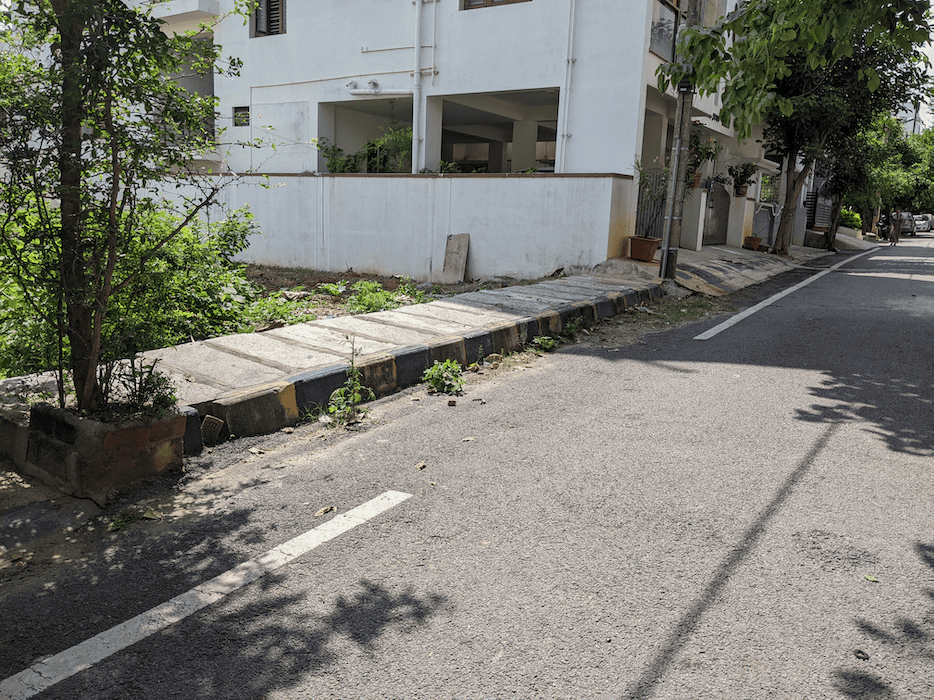

Satish Kumar, Executive Engineer, BBMP, RR Nagar Zone says, “Desilting of rajakaluves happens annually as per Annual Maintenance Contract (AMC). For this year we are in the process of doing inspections and raising tenders for the same.”

Regular and wide drain openings
The committee recommends placing wide drain openings at regular 5-metre intervals, especially at the lower points of inclined roads and at junctions. In the case of traffic islands in junctions, it advises providing a couple of bigger openings (0.6 -1.5 metres in width) in the middle of the island with appropriate gratings and a drain below to lead the water to the nearest longitudinal drains.

Read more: Citizens’ Water Way Project: How Bengaluru is revamping the Majestic-Bellandur drain network
Covering of drains
According to the committee, to avoid covering of drains, ramps to entrances of buildings should start from the edge of the individual property and should not be allowed to encroach upon either the road or the footpath. Roadside drains should be kept clear of garbage or other detritus that could obstruct the flow of water into drains. Water from individual properties should find its way into the drains, and not to the roads.
Coverings of drains by individual properties should not be allowed to hamper desilting. Covering by concrete slabs would be a strict no-no.
In reality, however, ramps that extend into the roads and block any flow of water are common. Residential and commercial establishments are equally at fault here. With large establishments like hotels, rainwater from the properties making its way into roads isn’t uncommon either.
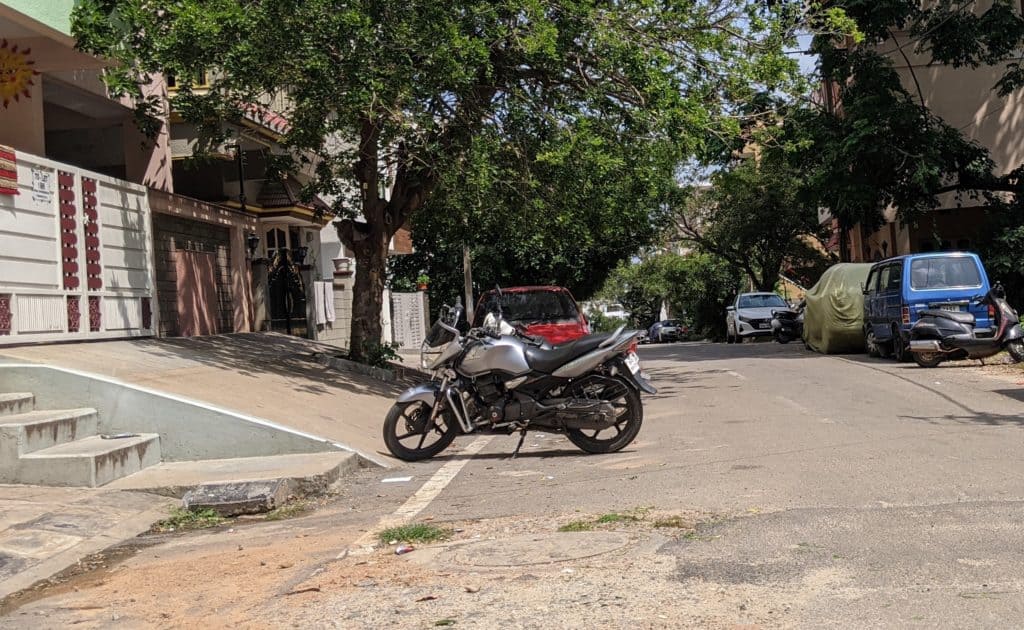
Roadside drain openings also end up being blocked by garbage and detritus that get dragged in by water when it rains. A stretch of the service road next to the Outer ring road (ORR) near Nagarbhavi circle illustrates this example well.
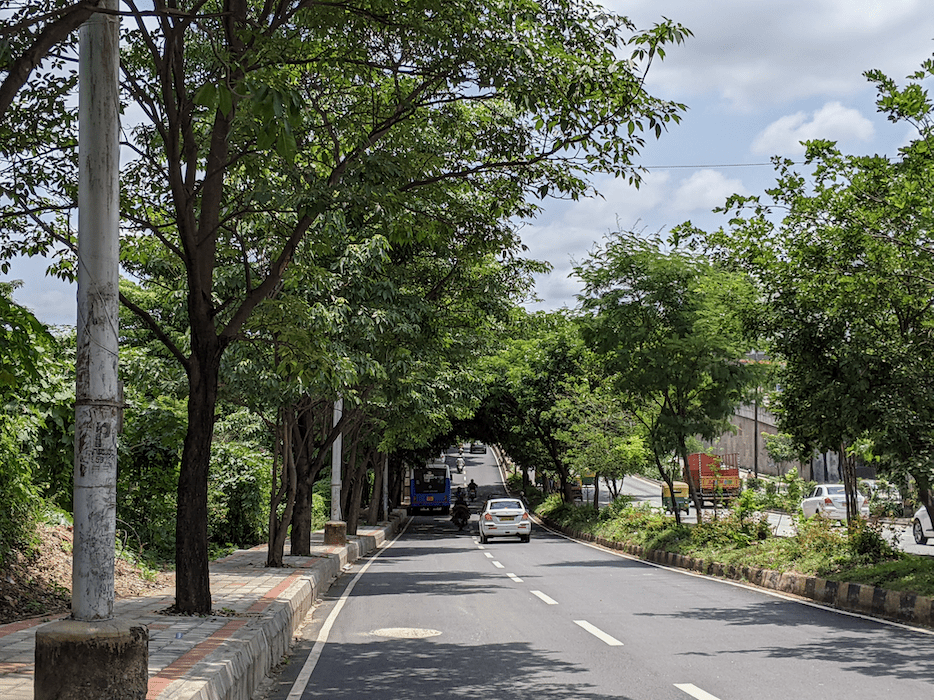
This stretch is at the bottom of two inclines. There is an inlet to the service road from the much higher placed ORR – this in turn causes flooding of the service road.
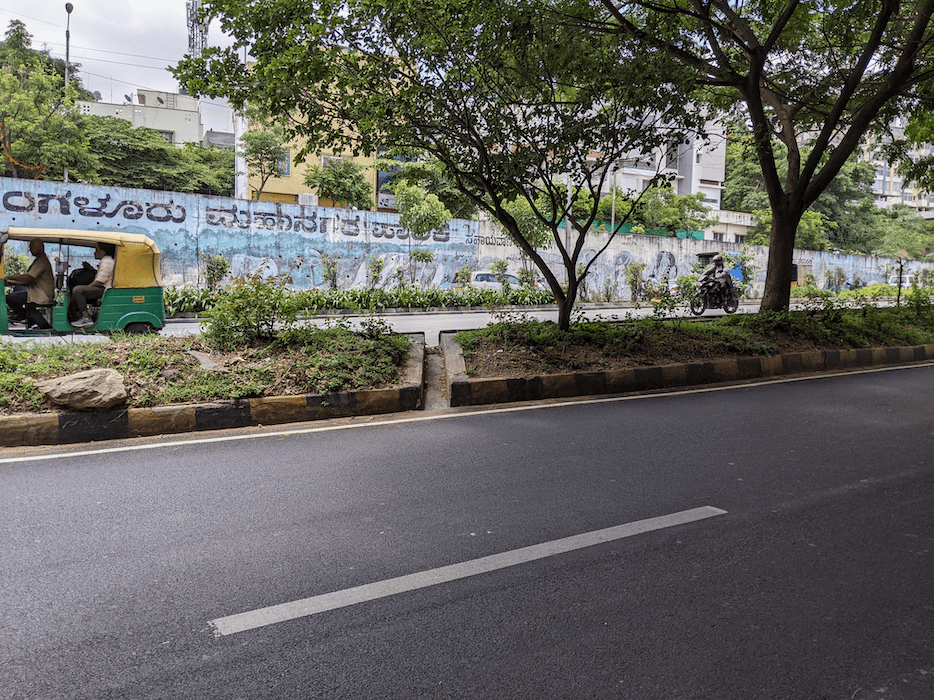
The outlets from this section are covered in silt and detritus.
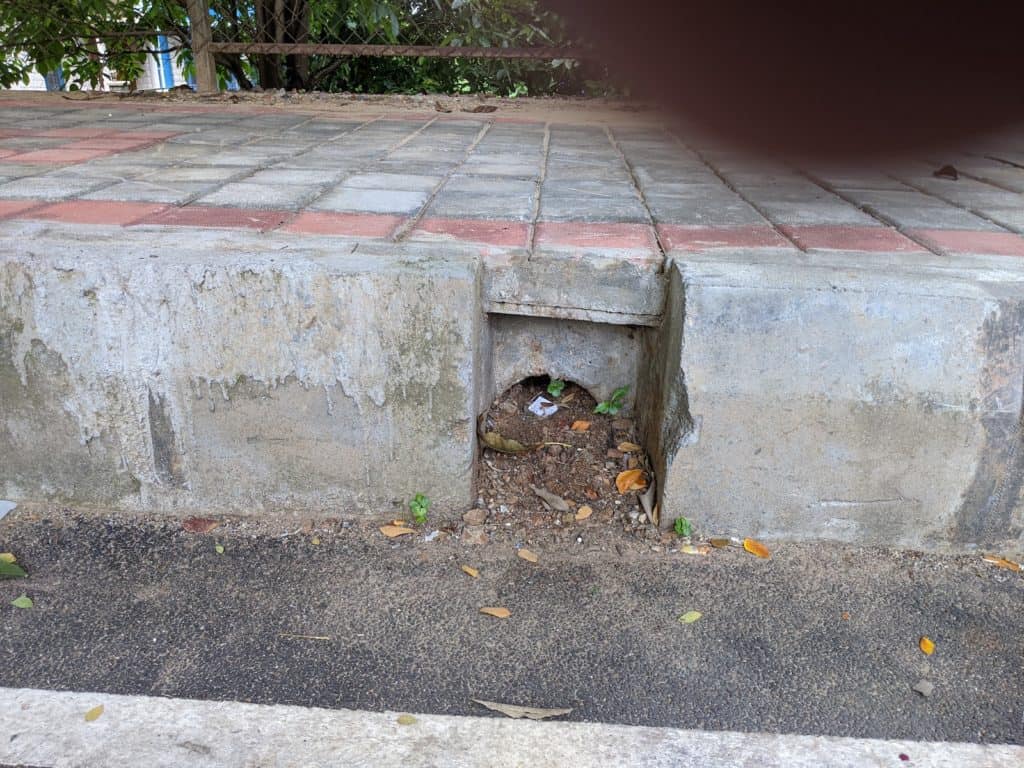
The water accumulates during rains, causing poor road conditions. And sometimes the road caves in at some sections. This section was newly laid for the Prime Minister’s visit to the National Law School.

Preventing choking of drains
The committee advises precaution to ensure that constructions next to drains do not fill up the drain as approach to the building. Owners need to be instructed to not close drains, and to build parapets at the edges to prevent construction debris from entering and clogging the drains. Construction materials should be stored within the construction site. If not possible, permission should be sought to use a portion of the footpath and road to store the materials.
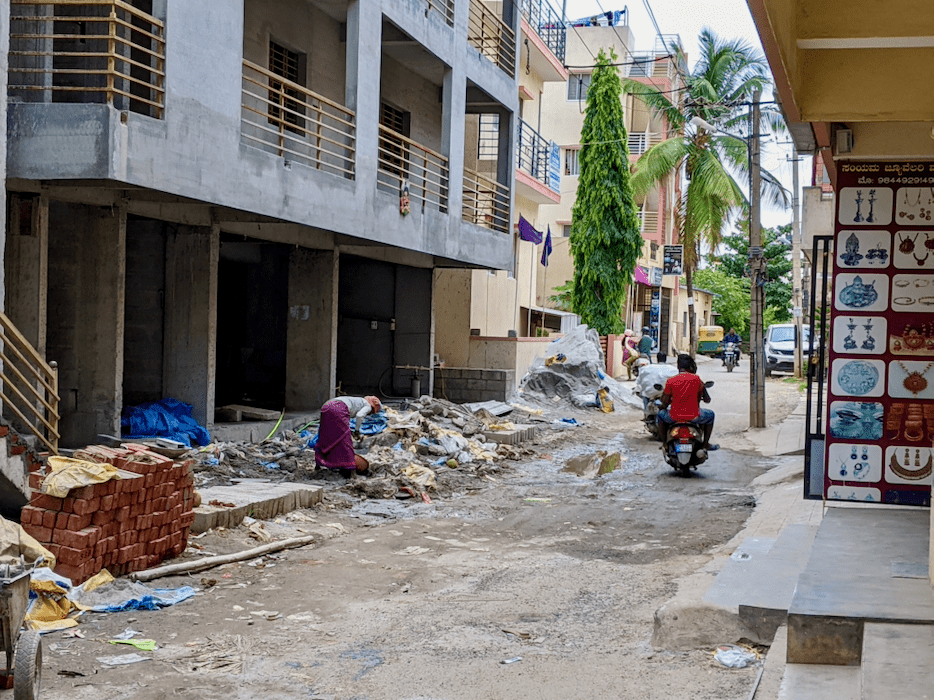
Major open drains
For major open drains and rajakaluves that smaller drains feed into, the committee recommends barricading using chain link fencing for the entire length of the drain to ensure no one dumps garbage into the drains. Automatic bar-screens that can filter out large solid waste objects need to be provided.
One of the biggest challenges with larger drains is that, even though they are designed to carry only rainwater, they end up being outlets for sewage and industrial waste. Dumping of garbage into these drains is also rampant.

Read more: Beautification in isolation: Questions on the facelift of K-100 Rajakaluve
The right way to dispose of solid waste
BBMP is supposed to identify suitable sites in each ward where citizens could dump their construction debris for a fee. This debris could be periodically transported and deposited outside the city.
Similar sites have to be identified for solid waste management in each ward. These measures are needed to ensure garbage doesn’t pile up around roads blocking drains and causing water logging.
Groundwater recharge wells inside drains
The committee recommends the construction of groundwater recharge wells in drains where rainwater is carried. It is important to ensure that these drains carry only groundwater and not sewage.
BBMP official Satish Kumar says, “U-shaped drains have regular pits installed to ensure ground-water recharge. In the case of rajakaluves, the retaining walls have gaps and water will discharge into the ground there, and nothing specific needs to be done for groundwater recharge.”
However many civic activists have accused BBMP of doing a shoddy job or not even building recharge pits in many places.
The IRC manuals recognise waterlogging as a serious issue that can cause damage to road surfaces and have clear specifications on how to design stormwater drains and outlets to prevent waterlogging on roads. These specifications also include special considerations for flyovers and bridges, subways, intersections, etc.
The manuals emphasise letting rainwater from within an area to be handled in that area itself. IRC guidelines also require regular drain maintenance which includes desilting of drains, clearing of obstructions and repairing of damaged linings.
Time to get the basics right
As much as these guidelines seem to be about water and flooding, they are entirely about ensuring durable roads by avoiding waterlogging and subsequent pothole formation. Ensuring that any water on the roads finds quick and unblocked outlets can help not only when it rains, but also in cases of broken underground water pipes and sewage lines.
Ensuring good roads and avoiding flooding requires that BBMP get its basics right. Periodic desilting and clearing of blockages of outlets can go a long way in reducing potholes and also avoiding flooding. Residents also need to show better civic sense by not blocking drains either by building ramps or blocking them with stones. Enforcement by BBMP officials will also help here.
The know-how and the guidelines are there on paper. Will BBMP please step up?
Unless the courts take cognisance of the fact that not doing government duty and causing pain and discomfort to general public is punishable with capital or equivalent; nothing will change. BBMP and BESCOM and other public works departments are filled with buffalo laziness hurts the country’s progress in the worst way possible